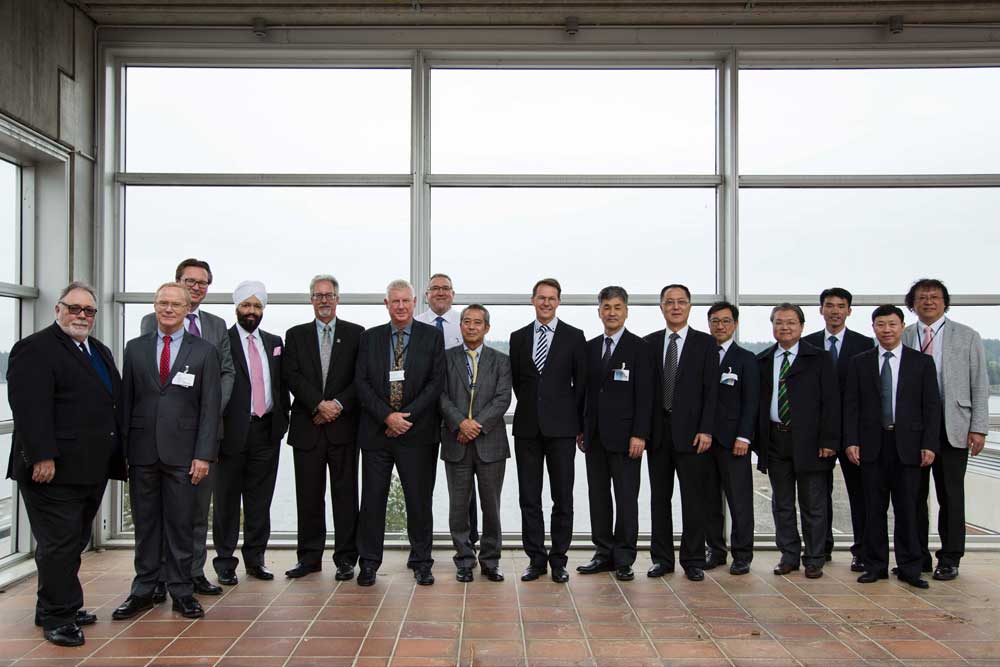Another LNG project for very big vessels is coming up at »Nor-Shipping«: A joint industry project (JIP) has presented the findings of its investigation for a gas-fuelled newcastlemax bulker on the main routes between Australia and China.
BHP, Fortescue, Mitsui O.S.K. Lines (MOL)[ds_preview], Rio Tinto, SDARI, U-Ming, Woodside, and DNV GL showed the results from stage one of their »Green Corridor« JIP. The result is an LNG-fuelled Newcastlemax design which is in the process of receiving Approval in Principle (AiP) from DNV GL, it was announced. It is the second initiative for a gas-fuelled big bulker coming up at Nor-Shipping – yesterday Lloyd`s Register and Hyundai presented another project.
Now, Chinese ship designer SDARI developed the design of the 210,000 dwt Newcastlemax bulk carrier based on their highly energy efficient Green Dolphin design. Dual fuel engines were quickly decided upon by the JIP partners, as this is a mature technology with multiple suppliers offering solutions, and the dual fuel design providing operational redundancy.
Based on fuel consumption analyses an LNG fuel tank size of approximately 6000 m3 was found to be optimal, with bunkering in Australia for the round-trip. Several locations for the LNG fuel tank were considered, with the two LNG fuel tanks placed directly above the engine room and submerged a few metres below the main deck. »This innovative design offers protection for the fuel tanks, enhances fire protection, and does not reduce the cargo carrying capacity, even for volumetric cargoes such as coal«, it was added.
»We looked at a wide range of capital and operational costs, including LNG and low sulfur fuel oil price sensitivities, as well as conducting a high-level bunker supply chain assessment. Based on this we found that, under the most realistic scenario, the payback period for the design was under 10 years, and under the optimistic projection just 6.7 years.«
Mike Utsler, Woodside Chief Operations Officer
»The idea of developing LNG-fuelling infrastructure for the vessels operating on the Australia–China iron ore and coal trade route has been contemplated by major charterers, ship owners and operators for many years. As LNG production has climbed, especially in Australia, and in recognition of the upcoming IMO restrictions on sulphur emissions, the option of LNG as a single-system solution for emissions compliance has become ever more attractive«, the partners said.
Morten Løvstad, DNV GL – Maritime Business Director Bulk Carriers, emphasized, »By having both charterers and ship owners as active partners in the JIP, we are also optimistic that this new design will materialize into firm orders in the near future.«
Vessel main particulars:
? Length overall: 300.0m
? Breadth: 50.0m
? Depth: 25.2m
? Scantling draught: 18.5m
? Deadweight at scantling draught: 210,000t
? Cargo holds volume: 225,000m3
? LNG tanks volume: 6,000m3
? Main engine: WINGD 6X72 DF MAN B&W 6G70ME-C9.5-GI
? Class notation: DNV GL, +A1 BULKCARRIER ESP BC-A GRAB[35] CSR, Holds 2, 4 ,6 and 8 may be empty, COAT-PSPC(B) GAS FUELLED




















